I've come across the page in SQL Server 2008, and is somewhat confused about it. I'm currently reading MCTS Self-Paced Training Kit (Exam 70-433): Microsoft SQL Server 2008-Database Development, where authors discuss the concept, but in a limited way.
From MSDN "Understanding Pages and Extents" I get an answer which doesn't really help. The web-page describes the size (8kb) of a page and how rows are stored in the page, and how columns will be moved automatically (by SQL Server) if the rows doesn't fit in the page.
But still, I wonder if the page-level is something I should pay attention to designing a database with ER-diagrams, tables and data types? Or, should I simply rely on that SQL Server handles pages automatically and in the best way possible?

Thanx for listening!
